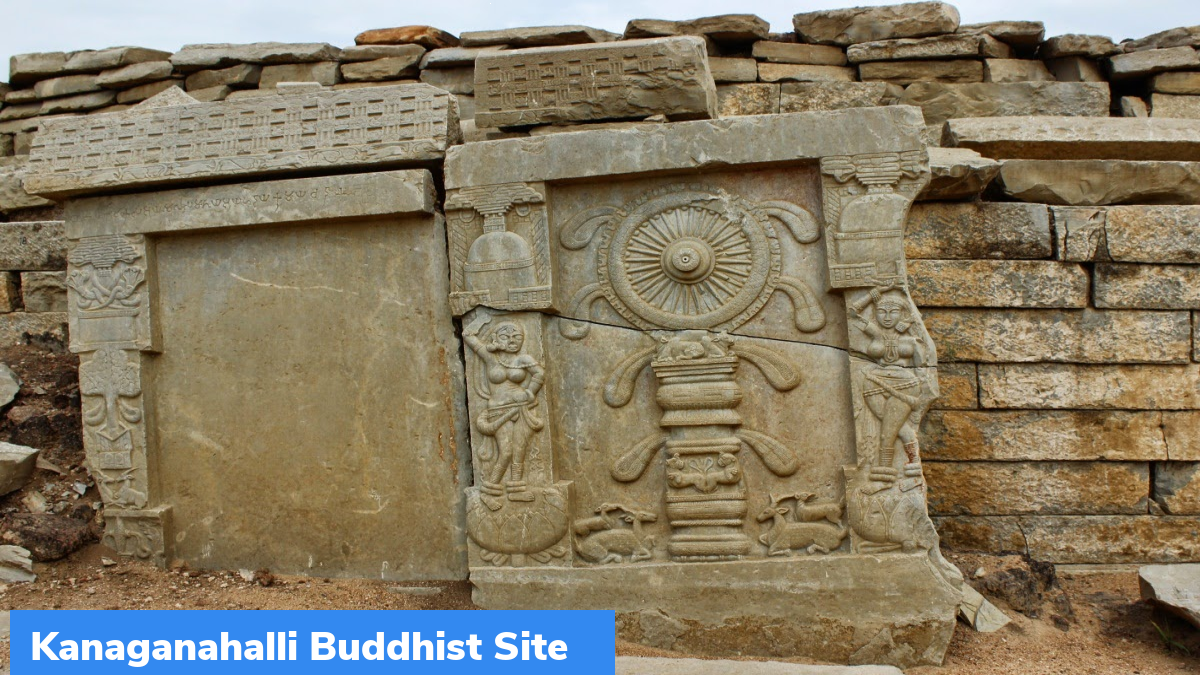Kanaganahalli Buddhist Site
The Archaeological Survey of India (ASI) has launched a conservation plan for “Kanaganahalli Buddhist Site”. Work has started on Rs 3.5 crore conservation project.
Highlights
- Kanagamahalli Buddhist Site was excavated by the ASI during 1994-2001. However, it was left neglected for around 20 years.
- This is an ancient Buddhist site, situated on the bank of River Bhima River near Kanaganahalli in Kalaburagi district in Karnataka.
Background
The Kanagamahalli Buddhist Stupa was constructed using locally available limestone. Most of the drum slabs, dome slabs, inscribed sculptures, and other structural remains were recovered in broken.
About the construction plan
- The conservation project seeks to reset the remains of Maha Stupa to their original positions. The remains of Maha Stupa were discovered during excavation.
- Under the conservation plan, fallen part of Ayaka platforms will also be reconstructed. In construction, newly-fabricated bricks of same size, texture and shape will be used.
- Under the plan, core filling from the drum portion will be removed and then stone blocks will be reset to their original position. After consolidating the entire stupa, railings and other peripheral works will be done.
- Reconstruction project will run for 2-3 years.
How was this site discovered?
Sannati and Kanaganahalli were ordinary and small villages. They were located on the bank of River Bhima till 1986. In 1986, Kali temple situated in Chandralamba temple complex in Sannati got collapsed. While clearing the debris, Ashokan edicts were discovered from the complex. With this discovery, both the villages came on the world map, and opened new scopes of historical research on Buddhism and Ashoka. It thus attracted the ASI and other researchers to do excavation.
About the Maha Stupa
During excavation, an abandoned well was discovered. Which turned out to be “Maha Stupa”. The Maha Stupa is referred as “Adholoka Maha Chaitya” in the Ashoka’s inscriptions. It is likely that, the Maha Stupa have been developed in three constructional phases, namely, Mauryan Phase, Early Satavahana Phase and Later Satavahana phase, during 3rd Century B.C. to 3rd Century A.D.
Month: Current Affairs - July, 2022
Category: Art & Culture Current Affairs







